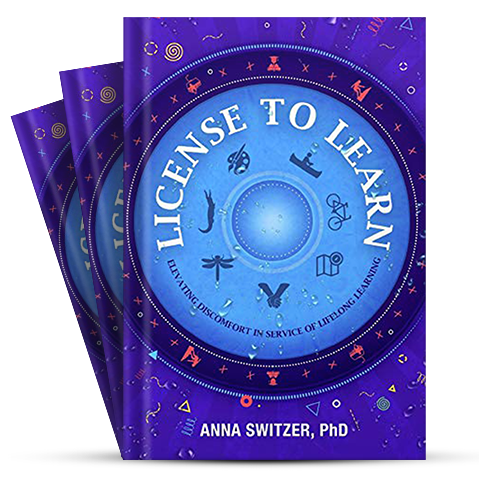On Facebook, there is a popular video of a swarm of birds. Out in the wilderness, two girls in a canoe witnessed a swarm of birds as it moved and morphed across the sky. This type of behavior is called “swarm intelligence.” The birds move in such amazing coordination with one another; wingbeat by wingbeat, they undertake a magnificently coordinated aviary dance. It is a beautiful display, and the girls in the canoe were quite lucky to bear witness to it in person. The rest of us are lucky to see the video they wisely captured. This video, with its movement of the birds, has been on my mind a lot during my trip to India.
One of the most entrancing things I have witnessed here is very different from the birds, yet equally as visually stimulating—the traffic on the street! Unlike the birds dancing in the sky, where every bird seems to instantaneously synchronize its movements with its fellow birds and all the birds seem in agreement about where they are headed next, the cars here move in every direction you can imagine. It is masterfully uncoordinated but just as entrancing to watch. In addition to the cars, pedestrians, bikes, rickshaws, motorcycles, water buffalo, dogs and huge semi-trucks fill the streets. Each one is going a different place, on a different schedule, using different modes of power. More fascinating, each one makes its own decisions about how much berth to give its fellow travelers.

A view of the main street in Old Delhi, India. Photograph by James L. Standfield/National Geographic Creative
Generally, traffic surges toward the left side of the road. Slower travelers (walkers, cows, dogs) are closer to the curb, and medium speed travelers (rikshaws, bikes, horses and wagons) are to their right. Speedier vehicles are the furthest out and thus closest to the faster vehicles coming from the other direction. If one of these speedier vehicles wants to pass someone going their same direction and there is some space that opens up on the “other” side of the road, nothing keeps them from swinging out into the opposing traffic lane to pass. Some drivers’interpretations of having enough space to perform this daring act led to some exciting moments for me! More than once I literally gasped or closed my eyes or both—not sure if my life or someone else’s was about to be snuffed out.
A lot of honking complements all of this activity, but the spirit behind the honking feels very different than in the U.S. In fact, most trucks have a bumper sticker invitation for the driver behind to “Please Honk.” Honking is a way for drivers passing someone to indicate that they are on the right and moving past, so the driver being passed knows not to swing wide. This chorus of honking is made even more entertaining because many of the horns have been adjusted to toot out melodies rather than a single dull note.
Amazingly, no one appears angry about the mass traffic and boisterous honking. Like the birds, this movement is business as usual. Passing one another, honking, hitting the brakes, taking advantage of every centimeter of useable space—its part of how the system works. And, it works. Very well, in fact. One of my very favorite things about going places in India was actually act of “going” because it contained so much thrill.
Although I consider myself mostly a “nature”girl and more easily moved by the sight of birds and other critters, I now consider myself a “human-nature”girl—appreciating the nature of the urban scene as well. Witnessing the wide variety of people and transportation modes in India is fascinating. There is as much “swarm intelligence” and beauty in the movement of people—of all of us, in all of our different directions—as there is in a flock of birds.
Original post: https://blog.education.nationalgeographic.org/2014/04/25/senses-of-india-sight/

Anna Switzer, PhD is a long-time outdoor educator, science educator, and educator of educators. She holds a bachelor’s degree in Physics, a masters in Oceanography, and a PhD in Education. Anna has worked for several prominent organizations including National Geographic Society, Outward Bound and EL Education
Connect with Anna
Nature Connection Experiences
for people of any age!
License to Learn
![]() A book to be reread, shared, and put into action!
A book to be reread, shared, and put into action!
“Anna's book is rich with examples, suggestions, and ideas to create a life filled with curiosity, adventure, and resilience, as well as comfort with discomfort. A valuable resource for therapists as well as educators.” - Dorothy Beerger (read the full review on Amazon.com)
![]() A Book to Help Us Flourish!
A Book to Help Us Flourish!
“I love this book! It was hard to put down. The author, Anna Switzer, is a student of adventure, psychology and life, and this is the story of how she’s helped others transform their lives, all the while growing into the remarkable human being she is today...” - Patrick M. (read the full review on Amazon.com)
![]() Gumption, Guts, and Wisdom
Gumption, Guts, and Wisdom
“Curiosity is the key to getting us out of the comfort zone and into the learning zone," says the author of License to Learn. What I loved about this book were the well-told personal stories inviting me along on Switzer's journey in combination with the well-researched science of the brain and theory of experiential education...” - Persnickety (read the full review on Amazon.com)
![]() Every Educator Should Read This Book!!!
Every Educator Should Read This Book!!!
“I have been in the field of education for over 30 years and "License to Learn" connected with me in so many ways! I was familiar with many of the educational terms and theories mentioned in the book, but these terms are clearly explained for the reader, not in the field of education...” - Lucy K. (read the full review on Amazon.com)
![]() Take a chance on this book.
Take a chance on this book.
“Anecdotal, with a beautiful push for continuing your drive to learn, and taking/making learning choices. Another wonderful tool for educators and seekers alike.” - Samuel (read the full review on Amazon.com)

